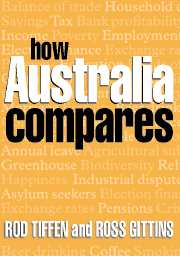Book contents
- Frontmatter
- Contents
- Reading the Tables
- Acknowledgments
- Abbreviations
- Introduction
- 1 People
- 2 Government and Politics
- 3 Economy
- 4 Work and the Labour Force
- 5 Government Taxes and Spending
- 6 Health
- 7 Education
- 8 Inequality and Social Welfare
- 9 International Relations
- 10 Environment
- 11 Science and Technology
- 12 Telecommunications and Computing
- 13 Media
- 14 Family
- 15 Gender
- 16 Lifestyles and Consumption
- 17 Crime and Social Problems
- 18 Religion, Values and Attitudes
- Sources and References
- List of Tables
16 - Lifestyles and Consumption
Published online by Cambridge University Press: 22 September 2009
- Frontmatter
- Contents
- Reading the Tables
- Acknowledgments
- Abbreviations
- Introduction
- 1 People
- 2 Government and Politics
- 3 Economy
- 4 Work and the Labour Force
- 5 Government Taxes and Spending
- 6 Health
- 7 Education
- 8 Inequality and Social Welfare
- 9 International Relations
- 10 Environment
- 11 Science and Technology
- 12 Telecommunications and Computing
- 13 Media
- 14 Family
- 15 Gender
- 16 Lifestyles and Consumption
- 17 Crime and Social Problems
- 18 Religion, Values and Attitudes
- Sources and References
- List of Tables
Summary
Housing and households
An Englishman's house may be his castle, but traditionally most of them were rented. Housing is one area where Australia's development differed sharply from its colonial founder's. As early as 1911 half of Australians owned their home, a figure that was reached in Britain only in the 1970s.
The selected countries show very different rates of home ownership (Table 16.1). They are lowest (just over half or less) in some European countries which for several generations have been highly urbanised and densely populated. Traditionally they were highest where land was relatively cheapest: in more rural societies and those with lower population density. The four New World countries, for example, had among the highest rates of home ownership in 1960. In that year Japan had the highest rate and its declining rate over the next 15 years reflects its rapidly increasing urbanisation. Many families owned their small village homes, but their children could not afford to buy real estate in Tokyo.
The countries show contrasting trajectories. The rate of home ownership is still increasing in countries such as Ireland, Italy, Sweden. But in most it seems to have reached a plateau. Australia, New Zealand, Canada and the United States – the traditional leaders in home ownership rates – saw almost no change between 1960 and 2000. This figure includes both those who own their home outright and those still paying off their mortgage.
- Type
- Chapter
- Information
- How Australia Compares , pp. 209 - 222Publisher: Cambridge University PressPrint publication year: 2004



